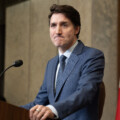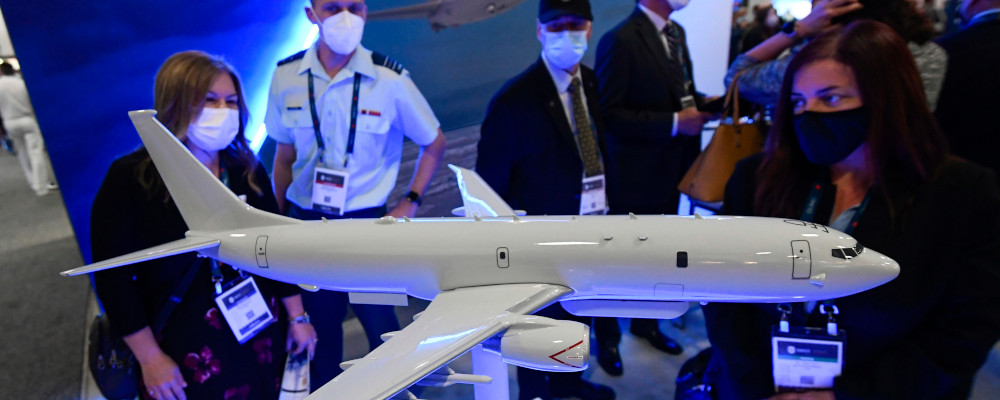If you asked reasonably informed Canadians to name the workhorse of the Canadian Armed Forces (CAF), you’d probably get a range of answers—perhaps the Air Force’s C-130 Hercules transport aircraft, the Army’s Light Armoured Vehicle, or the Navy’s Halifax-class frigates.
While all are good answers, one capability few people would likely identify is the CP-140 Aurora, a long-range multi-mission aircraft (MMA). The aircraft was originally purchased in 1980 primarily as an anti-submarine warfare (ASW) aircraft, but its unusual acquisition and subsequent development has placed it at the forefront of Canadian military capabilities.
During the 1970s, Lockheed offered a version of their Electra L-188 aircraft civilian transport aircraft modified for maritime patrol, called the P-3 Orion. It was used widely by the United States Navy and almost all close allies. Yet Canada chose a slightly different route—it took the P-3 airframe and modified it with a more capable mission system from another U.S. Navy aircraft, the S-3 Viking.
This set the tone for the aircraft’s history: Canada would continually invest and upgrade the aircraft’s capabilities as new threats and technologies emerged over its life. In the late 2000s, the aircraft’s role extended from its original core ASW and surface warfare capability, into intelligence, surveillance, and reconnaissance capabilities for operations over land (commonly referred to as C4ISR). Essentially it can identify, track, and direct other aircraft and ground units to potential threats while being useful in a domestic context during natural disasters to assist recovery and rescue efforts.These upgrades in particular made the Aurora a much-prized and sought-after aircraft in coalition operations. For example, in 2015 when Prime Minister Justin Trudeau delivered on his campaign promise to withdraw the Royal Canadian Air Force’s (RCAF) CF-18s from operations against ISIS, the CP-140 was retained in theatre for an additional two years due to its value for allied units.
Although the Aurora has provided an exceptional level of capability for much of its life, the airframe is nearing the effective end of its lifespan. Canada spent approximately $2 billion on refurbishing the aircraft’s airframe over the past five years, but such life extensions will become increasingly more frequent and costly as the aircraft ages. Furthermore, the aircraft is becoming increasingly vulnerable against new and emerging anti-air threats, such as long-range surface-to-air missiles, especially considering its reliance on on-board sensors.
In recent months, reports have emerged that Canada intends to accelerate the procurement of a successor to the Aurora: the P-8 Poseidon. Manufactured by Boeing, the aircraft was designed as a replacement for the P-3 Orion, the Aurora’s half-sibling, and largely matches its capabilities. Consequently, it is in service with nearly all of Canada’s major allies, including the United States, the United Kingdom, and Australia. One of the key reasons why Canada seems to have accelerated procurement of the P-8 is due to the potential for the aircraft’s production line to close in the coming years.
Bombardier has expressed interest in leading the development of a competing system based on the Global 6500 business jet. This may take years to develop and come at a significant cost to Canada but potentially could be more in line with how the CAF acquired and developed the CP-140 aircraft throughout its history.
While the acquisition of the P-8 would ensure that Canada’s long-range patrol aircraft fleet will remain relevant for the foreseeable future, the overall process by which the government arrived at its selection could benefit from a rethink.
At present, the U.S. and other allied militaries are developing a new paradigm of warfare. This involves using high-bandwidth networking to tie in all capabilities in different domains, high-definition sensor systems, and complex data-processing systems to analyze these data flows and provide useful insights.
The major consideration for what determines a capability’s utility is not its speed, range, or warhead size but the type of data analysis it can undertake and its connectivity with other platforms and data sources. These are some of the mundane, but essential, questions all military platforms must answer if they expect to play a role in a future fight.
Many militaries are starting to disaggregate roles from platforms—instead of one platform to do all roles, like with the CMMA, networking allows for several separate platforms to operate cooperatively to achieve the same or greater effect. However, the essential precursor to answering these questions is having an overarching strategy for these developments, and how to implement them more broadly into doctrine and equipment.

Overall, the CAF’s response to this technological shift has been less than stellar. While the significance of the shift is well understood by many in the armed forces, the lack of funding and absence of a robust, centrally-mandated effort has meant the military as a whole has fallen behind. Perhaps unsurprisingly, however, the CP-140 has been one of the few bright spots in this area, as its upgrades have largely followed these developments. The P-8 was designed and built with many of these concepts of future warfare front of mind. It was originally designed to operate with a small retinue of large surveillance unmanned aerial vehicles (UAVs), through a program called Broad Area Maritime Surveillance. Moreover, given the U.S. military’s leadership in battlefield networking, it is almost certain that the Poseidon will continue to be updated to keep abreast of new developments.
The issue is that Canada’s own strategy and approach for this emerging warfare remains largely undefined. Acquiring the P-8 will come with a range of assumptions surrounding this new information warfare that may or may not meet Canada’s needs when the country gets to defining them. This may not necessarily be a bad approach. The RCAF and Royal Canadian Navy (RCN) already operate extremely closely with the U.S. military, and thus adopting some of their standards and concepts makes sense. However, in some areas, it may not, and this might mean the aircraft will be less than ideal for some of the missions it may be tasked to complete. It is a risk, though perhaps an acceptable one considering the ageing state of the Aurora fleet and the narrow opportunity to acquire the P-8.
The question is whether the cost of developing a Canadian-developed system bespoke to the country’s requirements is worth the costs involved.
What desperately needs to occur is for Canada to start developing a comprehensive approach to thinking about the future of warfare—this would allow the military to better judge the relative merits of different options. The forthcoming Defence Policy Update would be a good place to undertake such an effort, allowing the military to better understand what its needs are and how best to invest its money to gain the most return for its capabilities.
In such a situation, it may discover that the Bombardier-led option would be better suited for Canada’s needs in the long term—or perhaps not. Another alternative would be some sort of joint purchase that disaggregates roles: a smaller P-8 fleet focused on the maritime domain, combined with a Bombardier project or projects focused on the land domain. However, there is no path for such an approach, partly because no enabling strategy for it exists. Without a clear plan for understanding the future nature of warfare, this issue will be replicated across all new capabilities that the CAF wants to acquire in the future.
That is the essential problem that needs to be addressed sooner rather than later.
Recommended for You

The Notebook by Theo Argitis: Mark Carney’s first major tests

The Weekly Wrap: Trudeau left Canada in terrible fiscal shape—and now Carney’s on clean-up duty

‘Another round of trying to pull capital from Canada’: The Roundtable on Trump’s latest tariff salvo

‘We knew something was coming’: Joseph Steinberg on how Trump is ramping up his latest tariff threats against Canada




